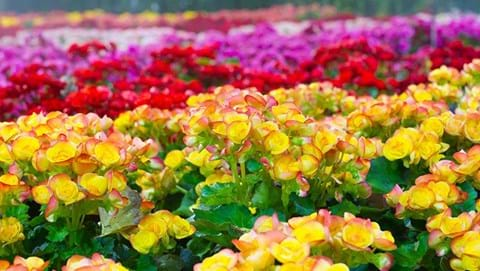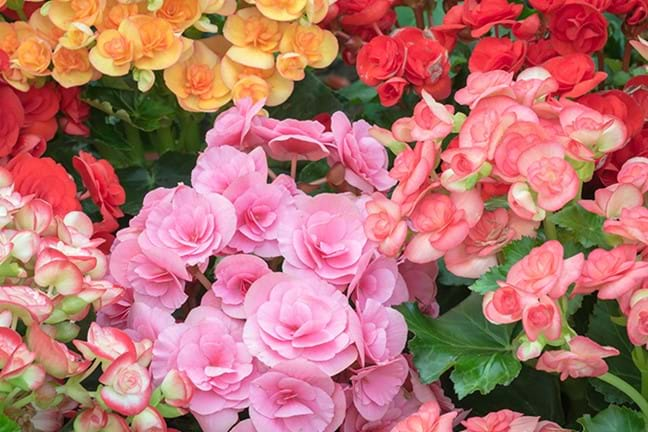- Begonias are easy to propagate from leaf or stem cuttings.
- Plants can also be grown from seeds. As they are quite fine, it is best to grow these in seed raising trays ensuring that they are lightly pressed into the mix and not covered. Water these well ensuring that they don't dry out.
- If you are unsure whether your plant can handle full sun check the leaves. Leafs that have a darker appearance prefer shade over those that are lighter in colour.
- Begonias love a slightly acidic soil with a pH between 5.5 and 6.5. Check your soils pH before planting out. If it needs to be lowered then treat with Yates Soil Acidifier Liquid Sulfur. If your soil has a pH that is lower than 5.5 you will need to use some Yates Hydrangea Pinking Liquid Lime & Dolomite to raise it up to the optimum level.
- They can handle some periods of drought, but prefer to be well watered. Don't be tempted to overwater these plants as they can rot if too much water is available or the soil is constantly saturated.
- There are many varieties of Begonias available. Some of these include:
Bedding/Shrub Begonias
This is the hardiest of all the varieties available. They can be grown in full sun to full shade and are low growing to create a bedding effect. This variety is often seen in public gardens, hanging baskets or streetscapes.
Cane Begonias
This variety has, as its name suggests, a cane like growth habit. These can grow quite tall with some being up to 2 metres in height! This variety is best grown in shade or semi- shade and kept away from afternoon sun.
Rhizomous Begonias
The most commonly known rhizomous Begonia is the Rex Begonia. These are best grown in a sheltered shady environment and make a great indoor plant.
Tuberous Begonias (Begonia tuberhybrida)
Often difficult to grow these Begonias have showy double flowers that come in a wide range of colours. They prefer a sheltered position in full to semi shade and are best grown in pots. Tubers are planted during winter and early spring for lovely flowers that appear from early Summer to late Autumn.











